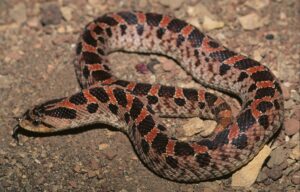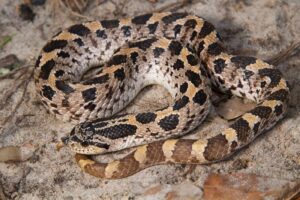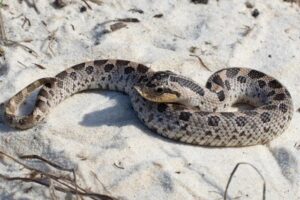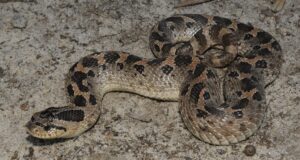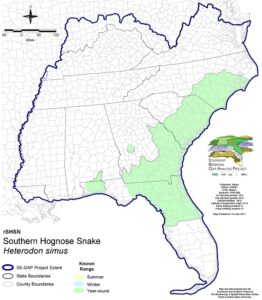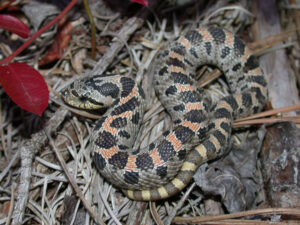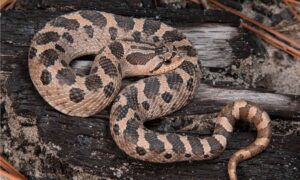The southern hognose snake is a native of the southeastern United States. It is strictly diurnal and can be seen in the warm mornings of spring and fall. The highly fossorial, short, heavy-bodied, solitary snake can be found crossing roads passing through its sandy habitat.
Scientific Classifications
- Suborder:Serpentes
- Family:Colubridae
- Genus:Heterodon
- Species:H. simus
Conservation Status
Description
Size
The adults have a total size of 14-24 in (35.5-61 cm). The females are larger than the males.
Color and Appearance
The stout colubrids have a pointed, upturned stout and a wide neck. The midbody has 25 keeled dorsal scales. They have yellowish, light brown, reddish, or grayish dorsal ground color that bears a prominent row of dark blotches alternating with smaller ones on the flanks.
The juveniles have a belly distinctly darker than the underside of the tail. As they mature, the belly becomes a pale white.
Southern Hognose Snakes at a Glance
Distribution
It lives on the coastal plain of the southeastern United States from North Carolina, west to Mississippi, and south to Lake Okeechobee in Florida.
Habitat
It occurs in open and dry sandy areas – in dry fields, river floodplains, and wire grass flatwoods.
Though the introduction of fire ants has been implicated in their dwindling numbers, some of the most potent causes are habitat loss, fragmentation, degradation, and road mortality.
Lifespan
The southern hognose snake lives for about 9 years.
Predators
They are eaten by the common kingsnake, eastern indigo snake, red-tailed hawk, and other carnivorous mammals and birds.
Diet
The southern hognose snake preys on frogs (especially Pseudacris ornata and Hyla gratiosa), toads, mice, and spadefoots.
Reproduction
Oviparous (lays eggs that hatch outside the body)
The mature adults mate from April to August. Whitish, thin-shelled, leathery eggs are laid in clutches of 6-14. They hatch after 55-60 days. Each hatchling is 6-7 in (15-18 cm) in total length.
Source
herpsofnc.org, fws.gov, reddit.com, msherps.com, basic.ncsu.edu, srelherp.uga.edu, a-z-animals.com

